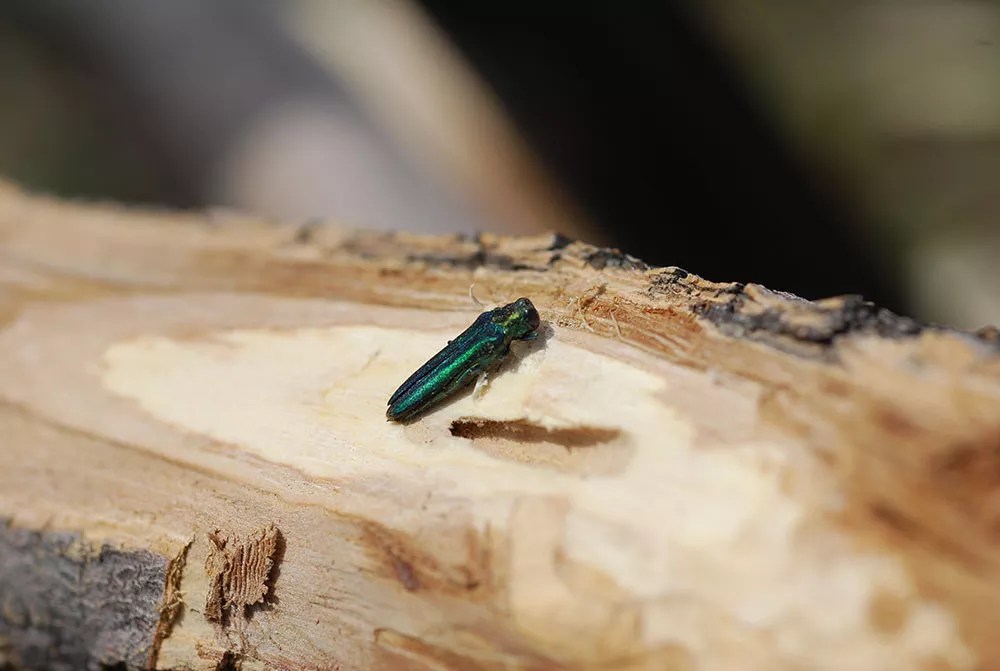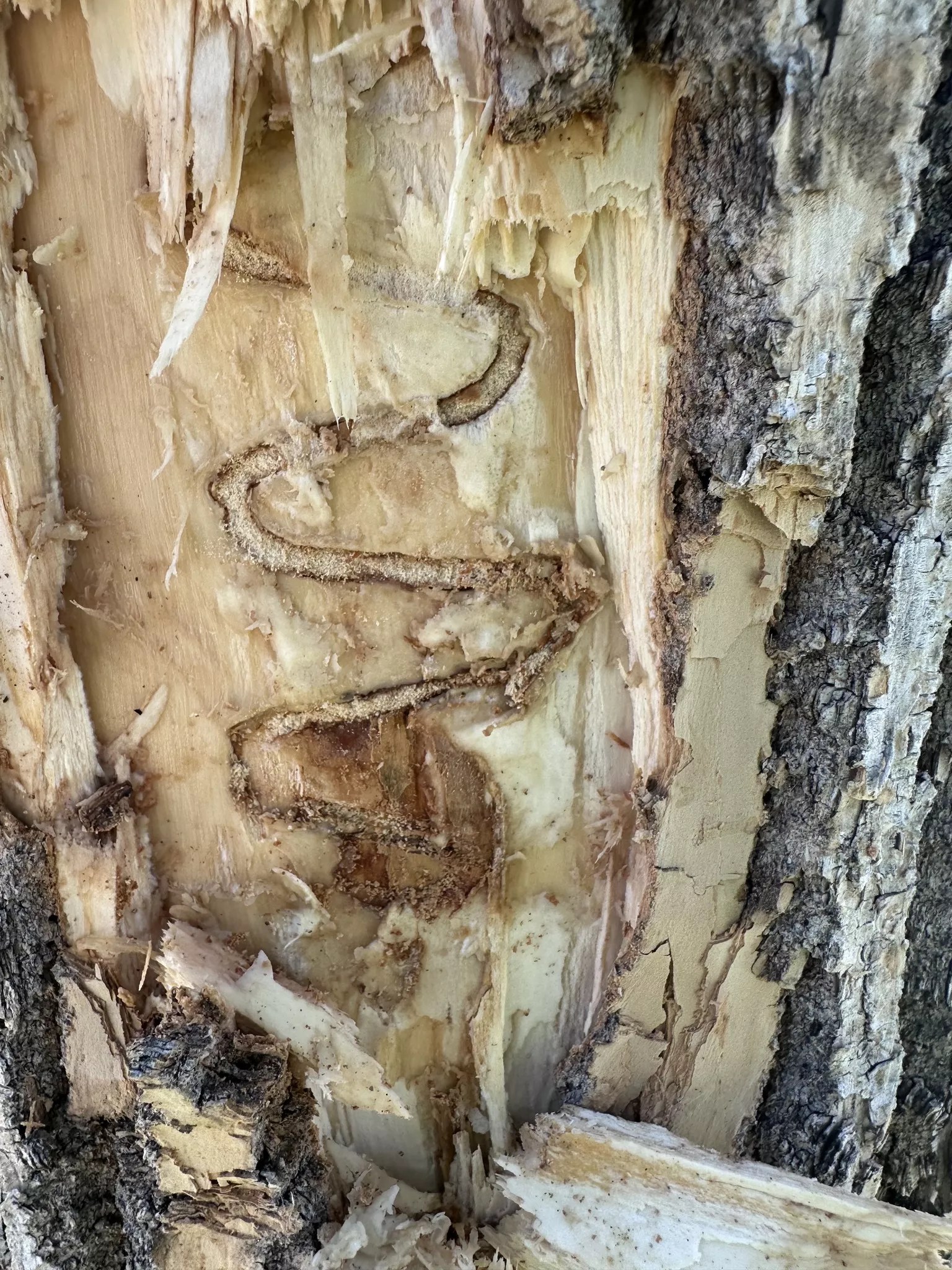
beasmartash.org

Audio By Carbonatix
The day city officials have dreaded for over a decade has finally arrived: The emerald ash borer has reached Denver.
The emerald ash borer is an invasive species of beetle native to north-eastern Asia. It is considered the most destructive forest pest in United States history, with its larvae having killed tens of millions of ash trees by tunneling through the wood and damaging the tree’s ability to transport nutrients and water.
The insect was identified in Denver for the first time on June 17, the city announced today, June 26. That is a big concern as there are 1.45 million ash trees in the Denver metro area and 330,000 within city limits, accounting for around one in every six trees in the Mile High City, according to Denver Parks & Recreation.
“This is not a low-stakes battle,” says Jolon Clark, executive director of Denver Parks & Recreation. “EAB has devastated ash tree populations in 37 U.S. states and parts of Canada, costing those communities billions of dollars. Based on this widespread destruction, we’ve been proactively battling EAB.”
The City Forester’s Office has been preparing for the arrival of the emerald ash borer since 2013, when the insect was first detected in Colorado. The infestation began in Boulder and has since spread to cities including Broomfield, Edgewater, Aurora, Wheat Ridge and Lakewood. Denver launched a public education campaign in 2016 urging residents to be on the lookout for the pests.

A tree infected by the emerald ash borer.
Denver Parks & Recreation
To deal with the insect’s arrival, officials ask Denver residents to immediately identify whether they have an ash tree. Those who do are instructed to treat or replace the tree as soon as possible. Properly administered treatments are 95 percent effective and should always be performed by a licensed tree expert, according to the City Forester’s Office.
Denver residents may be eligible to receive a free tree to help maintain the city’s tree canopy, if they have room in the public right-of-way adjacent to their property.
“We’re in this for the long haul, actively seeking to partner with residents in the City and County on how to treat and/or replace their ash trees both now and in the years ahead,” says Luke Killoran, Denver’s City Forester. “We simply can’t stress enough how important it is for Denver residents to take action when it comes to identifying, treating and/or replacing their ash trees as soon as possible.”
Ash trees infested with the emerald ash borer should have D-shaped exit holes, falling bark or wavy trail lines, and attract the Northern flicker woodpecker. Residents are encouraged to spread the word to other community members and to avoid transporting firewood from ash trees.
Killoran says Denver has already replaced small ash trees on city land and established a “rigorous treatment schedule” for historic ash trees on city property.
In the last ten years, the city’s public education campaign resulted in the removal of over 1,000 ash trees, the treatment of 6,000 ash trees and the planting of approximately 1,500 trees per year to help to decrease gaps caused by ash tree losses. Killoran previously worked as the city forester in Lakewood when the emerald ash borer hit the city in 2024.
“We learned a lot in Lakewood, and we are ready to respond in Denver,” Killoran says.
Visit beasmartash.org for more information on identifying and protecting against the emerald ash borer.